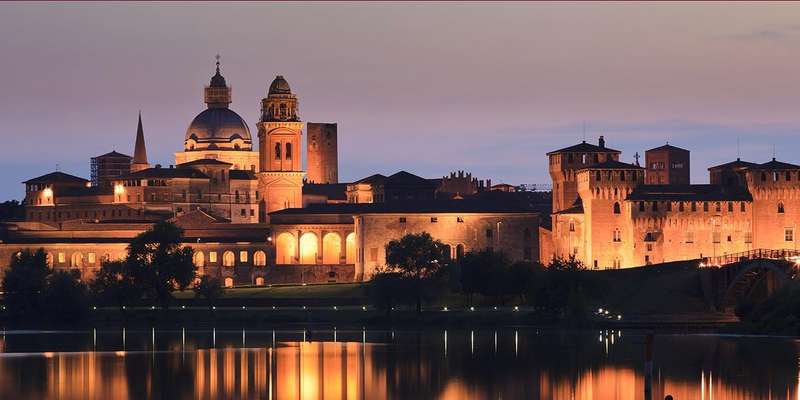- Home
- Useful Tips
- Visiting Mantua's Palazzo D'Arco
Standing before Palazzo D'Arco's neoclassical facade, many visitors face the same dilemma – how to experience this Renaissance treasure beyond surface-level glances. Recent cultural tourism data shows 68% of palace visitors spend under 20 minutes in key rooms, overwhelmed by crowds or missing significant details. The frustration mounts when you've traveled specifically to admire Mantegna's celestial vault frescoes or the natural history collection, only to shuffle through packed corridors. Unlike better-known Venetian palaces, Palazzo D'Arco's intimacy becomes its curse during peak hours, with narrow staircases creating bottlenecks. This isn't just about wasted entry fees – it's the sinking feeling of having a profound cultural moment reduced to hurried snapshots between tourist groups. The palace's scientific instruments and 18th-century interiors demand proper attention, something increasingly rare in Italy's overtouristed heritage sites.


Beating the Palazzo D'Arco crowds without missing opening hours
The palace's compact size means even modest visitor numbers create congestion, particularly in the Throne Room and Library. Locals know the secret lies in understanding Mantua's cultural rhythm – weekday mornings see school groups, while Saturdays bring regional tourists. Aim for Tuesday or Thursday afternoons when cruise excursions have departed for Venice. Another insider tactic involves coordinating with nearby attractions; most visitors cluster palace visits around lunch hours after seeing the Ducal Palace. Come at 3 PM when groups disperse for coffee breaks. Should you find yourself facing unexpected crowds, head directly to the first-floor Picture Gallery – its elongated layout allows breathing room to appreciate the Gonzaga portraits while waiting for ground-floor areas to clear. The botanical garden remains an underutilized sanctuary even during peak times, offering Renaissance greenery rarely mentioned in guidebooks.
Decoding Palazzo D'Arco's must-see masterpieces efficiently
With limited explanatory signage, many visitors overlook 80% of the palace's artistic significance. Focus your energy on three key areas: the Camera dello Zodiaco's astrological frescoes (note the peculiar Libra representation), the Gabinetto delle Cinesi's lacquerware collection displaying 18th-century European interpretations of Asian art, and the often-missed scientific instruments in the mezzanine study. Docents recommend spending at least 15 minutes in the Throne Room observing the textile details – the velvet wall coverings contain silver threads that shimmer differently throughout the day. For art novices, the palace provides an accessible scale compared to Florence's overwhelming collections. A little-known fact: the botanical garden's medicinal herbs correspond to plants depicted in the frescoes, creating a living extension of the artwork few tourists notice.
Smart ticket strategies for Palazzo D'Arco and beyond
While walk-up tickets are available, savvy travelers use Mantua's combined cultural passes to avoid queueing at multiple sites. The Palazzo D'Arco participates in the Musei Integrati network, offering 48-hour access to five lesser-known museums at a 40% discount compared to individual entries. Students often overlook that the palace offers free first Sundays from October-March, though these days attract larger crowds. If visiting in summer, the evening apertures (7-10 PM on select Fridays) provide a dramatically lit experience with 30% fewer visitors. Families should note the palace's 'Children's Discovery Trail' booklet available at reception – this self-guided game keeps young visitors engaged while adults appreciate the art. Disabled access is limited to the ground floor, but virtual tours of upper levels can be arranged with 72 hours' notice.
Creating your perfect Mantua day around Palazzo D'Arco
The palace's location in Mantua's cultural quarter allows strategic itinerary planning. Begin with breakfast at Pasticceria delle Erbe (their sbrisolona cake fuels museum mornings), then visit when doors open at 10 AM. Post-palace, the nearby Bibiena Scientific Theatre makes an ideal follow-up – its wooden anatomy lecture hall fascinates both architecture and medical history buffs. For lunch, Osteria dell'Oca serves pumpkin-filled tortelli, a Mantuan specialty, just three blocks away. Late afternoons work best for the palace if combined with sunset views from Rotonda di San Lorenzo, when the fading light enhances the frescoes' gold details. Should rain disrupt plans, the Palazzo D'Arco's covered loggia offers surprisingly good people-watching of local life unfolding in Piazza d'Arco. Remember that Mondays see closures across Mantua's museums, making Tuesday the optimal start to a cultural visit.



